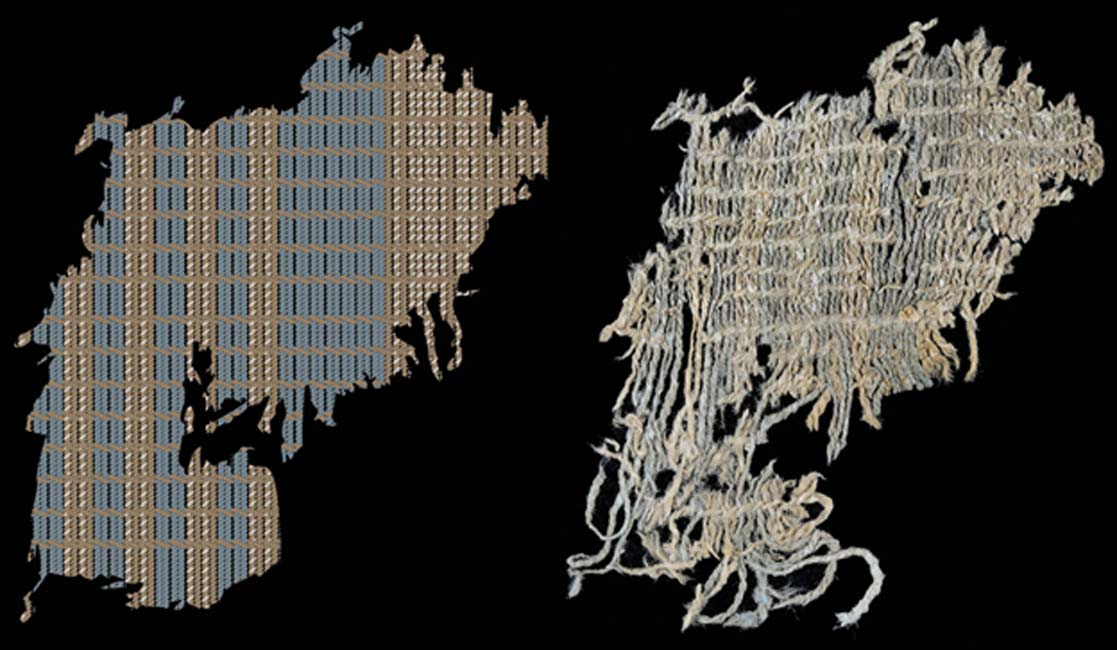Think Your Blue Jeans Are Faded? Compare Them to This 6000-Year-Old Textile Found in Peru
Although denim jeans in their modern form are an invention from the late 1800s, the process of dying cotton with indigo is a technique that dates back thousands of years. Previously acknowledged as an ancient Egyptian development, researchers have now found an even earlier use of indigo in the world – in a Pre-Incan site on the north coast of Peru.
As the researchers Jeffrey C. Splitstoser, Tom D. Dillehay, Jan Wouters and Ana Claro wrote in their article published inScience Advances:
“6000-year-old cotton fabrics from the Preceramic site of Huaca Prieta on the north coast of Peru retained traces of a blue pigment that was analyzed and positively identified as an indigoid dye (indigotin), making it the earliest known use of indigo in the world, derived most likely fromIndigofera spp. native to South America. This predates by ~1500 years the earliest reported use of indigo in the Old World, from Fifth Dynasty Egypt [ca. 4400 BP (before present)].”
National Geographic reports that the researchers analyzed eight cottontextile fragments that are between 6,200 to 1,500 years old. Through the use ofhigh-performance liquid chromatography the team identified the presence of plant-based indigo dye in five of eight examined samples - two plain weaves and three twined textiles. It is believed that the torn and cuttextiles were once parts of bags or containers.
"The textiles were originally very, very dirty," archaeologist Jeffrey Splitstoser told National Geographic. "You could see blue in some of the samples but they were mostly grey. You know how your blue jeans fade over time? Well, these were like 6,000-year-old blue jeans."
In their article, the research team wrote that they set out to “see whether indigoid dyes could be detected intextile fragments of the given archaeological context. The conclusion is clear: yes.”

A cotton band or belt from Huaca Prieta which is 4100 -3500 years old. It has an indigo-blue center stripe and yellow ochre. (Lauren A. Badams)
Before this study, the researchers’ article states that “the earliest identified blue dyes in the Americas were from Ocucaje and the Paracas Necrópolis dating to around 2500–2250 cal BP […] In Old World fabrics, there are Egyptian textiles with indigo-dyed bands from the Fifth Dynasty (ca. 4400 BP). Early examples of indigo also are known from Xinjiang, China, where indigo has been positively identified as early as 3000 BP. It is believed that indigo might have been used earlier in the Near East; however, actual examples with positive identifications of indigo are not available, making the indigo found at Huaca Prieta the earliest known use of indigo.”
Huaca Prieta is an archaeological site that was inhabited between 14,500 and 4,000 years ago. It was first excavated in the 1940s by Junius Bird and is a large stone and earthen ceremonial mound. The site produced “the oldest known cotton fabrics decorated with recognizable art in the Americas.” (Splitstoser et al.)

Junius Bird examining textile, botanical, and cordage specimens at Huaca Prieta, 1946-1947.
Photo by John Collier. (American Museum of Natural History)
Regarding the use of cotton intextile-making, it appears that like the use of indigo, the ideaemerged independently around the world. Apart from examples that have been found in Peru and Mexico, cotton was grown, spun, and woven in India, China, Egypt, and Pakistan in ancient times.
- Han Purple: A 2,800-year-old artificial pigment that quantum physicists are trying to understand
- Samuel Bellamy and the Treasure of Whydah
However,National Geographic points out that Peru's northern coast holds the earliest examples of cotton domestication as well. Splitstoser told National Geographic that “The region's native cotton, Gossypium barbadense, is also known as Pima cotton, and the strain became a backbone of modern cotton industry hybrids.”

Cotton cloth fragment from Huaca Prieta, 2500 BC - American Museum of Natural History, New York, USA. (Public Domain)
Another famous Peruviantextile is theParacas Shroud, a 2,000 year old funeral shroud which “has been described as uniquely complex, with more than 80 hues of blue, green, yellow and red woven into a pattern of 32 frames.” This shroud made the headlines in 2014 when it was returned to Peru from Sweden.
The shroud contains images of condors, frogs, cats, corn, cassava, and people, and it may have once functioned as a calendar of the Paracas civilization’s farming seasons. It is a textile that was made using complex weaving and elaborate plaiting and knotting techniques. Along with other Paracas necropolis embroideries, it is one of the finest examples of woventextiles ever produced by Pre-Columbian Andean societies.

Detail of a Paracas textile found in the necropolis in the 1920s. (Brooklyn Museum)
Top image: Diagram and photo of the cotton fabric from the site of Huaca Prieta, Peru with indigo blue stripes. Source:Splitstoser et al.



















